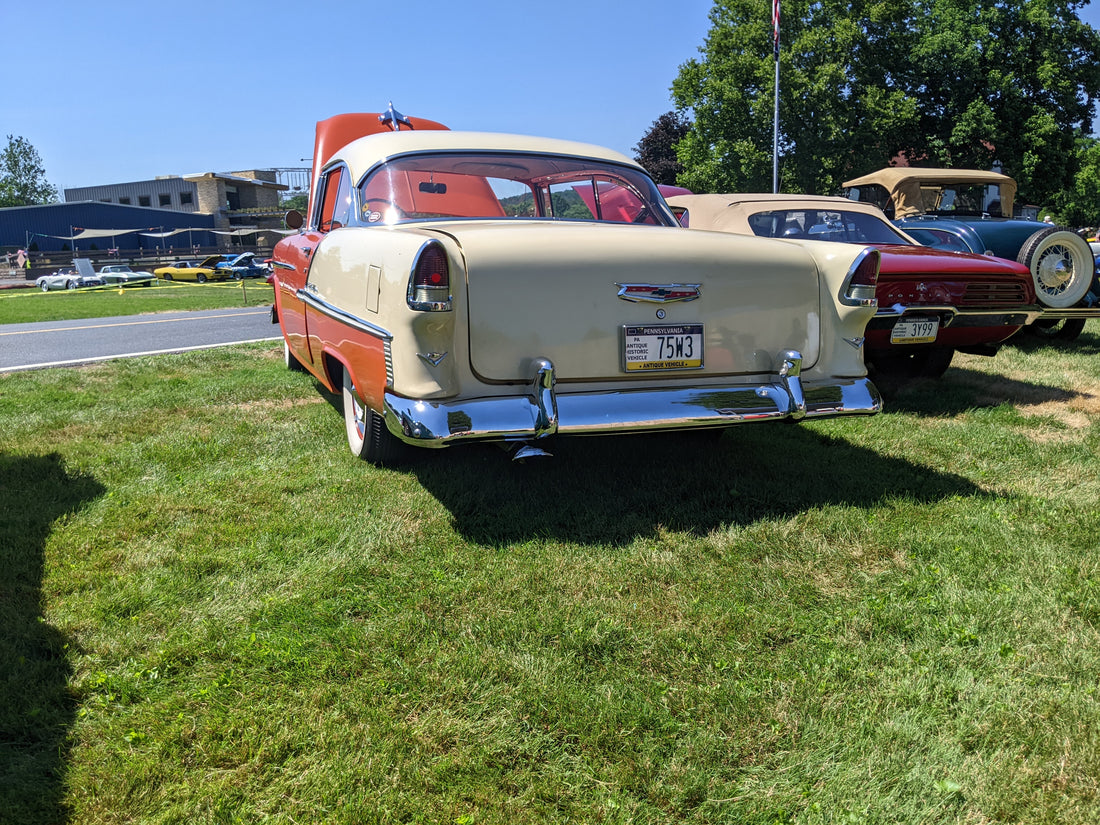I started this journey because I wanted to celebrate 1955, 1956 and 1957 Chevrolets. They make people like my parents nostalgic for their youth and they reminisce and laugh how they used to cruise the evening away for $0.50 worth of gasoline. The 1955’s are so clean looking, the 1956’s have more glam but are not ostentatious. The 1957 is the one with bigger fins, a sure sign you are in the 1950’s and they had more chrome. For a lot of people the 1957 is the holy grail of the tri-fives. For me, I think a 1956 is the right year. How many of us were conceived in the back of a tri-five? I am not admitting to anything about my parents.
Check out my Instagram account to see Tri-Five Autos, and the various car meets I have attended. https://www.instagram.com/michael.dowlin/
My journey into the tri-five world began in high school. A friend of mine, Joe D. had several of the tri-five cars. If memory serves me, they were all straight six engines. Most were four door versions. Some ran and some were in various stages of disassembly. Joe spent time showing me drive trains, explaining how the engines ran, valves opening and closing, camshafts, etc. Joe showed me how to set the timing with a timing light, loosen the distributor and turning it to adjust by advancing or retarding the timing, setting the dwell and changing points. Wow, remember points? Did anyone run a Mallory duel point distributor back in the day? I was excited to learn and ready to work on my own car. (Watch how to time an engine on YouTube: https://www.youtube.com/watch?v=nM3LRV20l6c&t=35s )
My first car was a 1967 Pontiac LeMans two door hardtop, with a 326 cubic inch V-8 backed by a three speed automatic. It looked like this, though this isn’t the car.

Mine did not have a GTO scoop like the picture. The first thing to fail on this three hundred dollar beauty was the fuel pump. There was an egg shaped lobe on the front of the crank that spun and pressed the arm on the fuel pump each time it went around. Both the lobe and the fuel pump arm were worn from the 100,000 plus miles and going up hill, did not press enough on the pump to move fuel. It would stall going up hill. My Father and I fixed that ourselves. Success! Unfortunately it had a faulty transmission so it didn’t last long with us. Dad said we couldn’t handle fixing that and in 1978, I didn’t have $700+ to get a transmission shop to fix it. In my next post I will tell you about the next car, a 1964 Bel Air.
